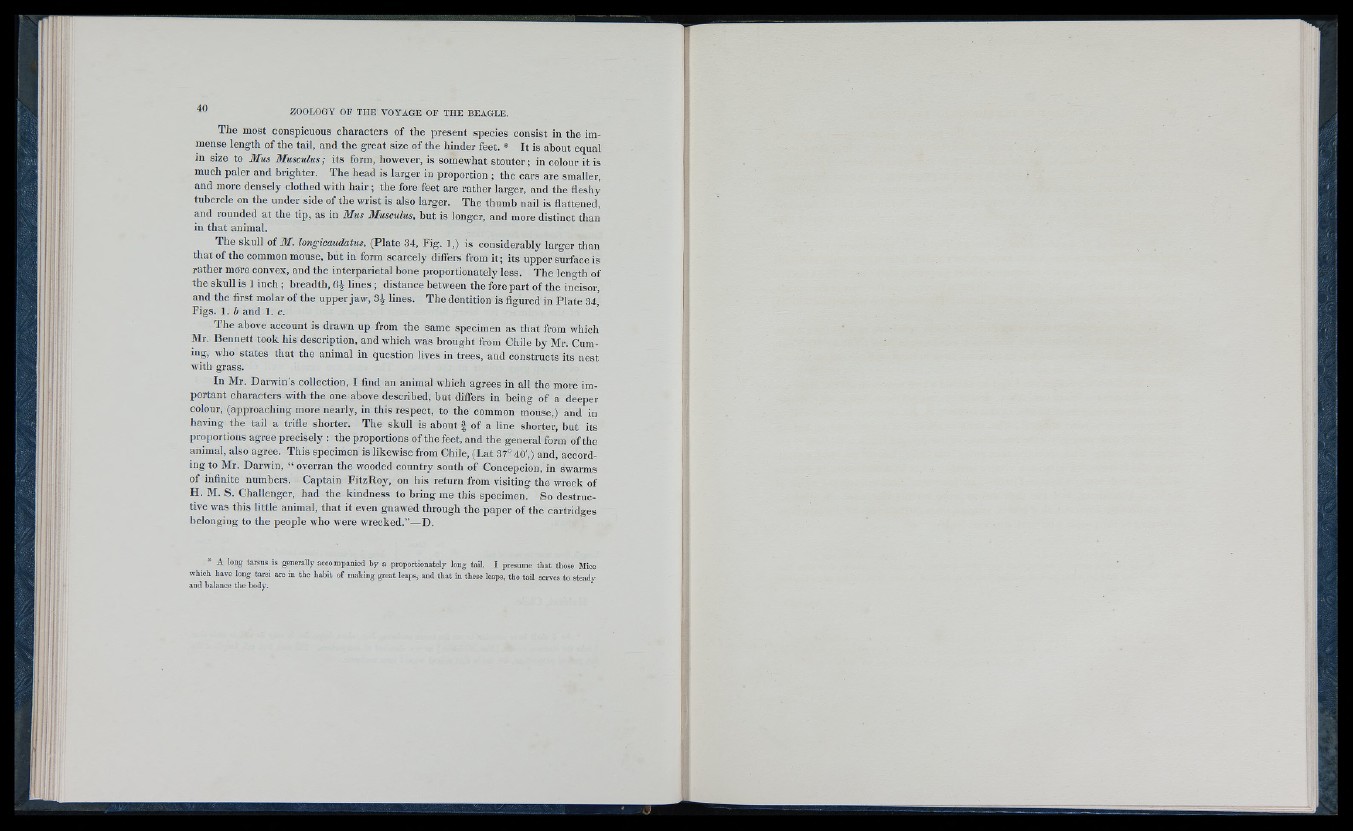
The most conspicuous characters of the present species consist in the immense
length of the tail, and the great size of the hinder feet. * It is about equal
in size to il/iis Musculus; its form, however, is somewhat stouter; in colour it is
much paler and brighter. The head is larger in proportion ; the ears are smaller,
aud more densely clothed with hair; the fore feet are rather larger, and the fleshy
tubercle on the under side of the wrist is also larger. The thumb nail is flattened,
and rounded at the tip, as in 3Ius Musculus, but is longer, and more distinct than
in that animal.
The skull of M. longicaudatus, (Plate 34, Fig. 1,) is considerably larger than
that of the common mouse, but in form scarcely differs from it; its upper surface is
rather more convex, and the interparietal bone proportionately less. The length of
the skull is 1 inch ; breadth, lines ; distance between the fore part of the incisor,
and the first molar of the upperjaw, 3J lines. The dentition is figured in Plate 34,
Figs. 1 . b and 1 . c.
The above account is drawn up from the same specimen as that from which
Mr. Bennett took his description, and which was brought from Chile by Mr. Cuming,
who states that the animal in question lives in trees, and constructs its nest
with grass.
In Mr. Darwin’s collection, I find an animal wliich agrees in all the more important
characters with the one above described, but differs in being of a deeper
colour, (approaching more nearly, in this respect, to the common mouse,) and in
having the tail a trifle shorter. The skull is about | of a line shorter, but its
proportions agree precisely : the proportions of the feet, and the general form of the
animal, also agree. This specimen is likewise from Chile, (Lat 37° 40',) and, according
to Mr. Darwin, “ overran the wooded country south of Concepcion, in swarms
of infinite numbers. Captain FitzRoy, on his return from visiting the wreck of
H. M. S. Challenger, had the kindness to bring me this specimen. So destructive
was this little animal, that it even gnawed through the paper of the cartridges
belonging to the people who were wrecked.”—D.
• A loDg tarsus is generally accompanied by a proportionately long tail. I presumo tluat those Mice
rvliicli have long tarsi are in the habit of making great leaps, and th at in these leaps, the tail serves to s
aud balance the body.